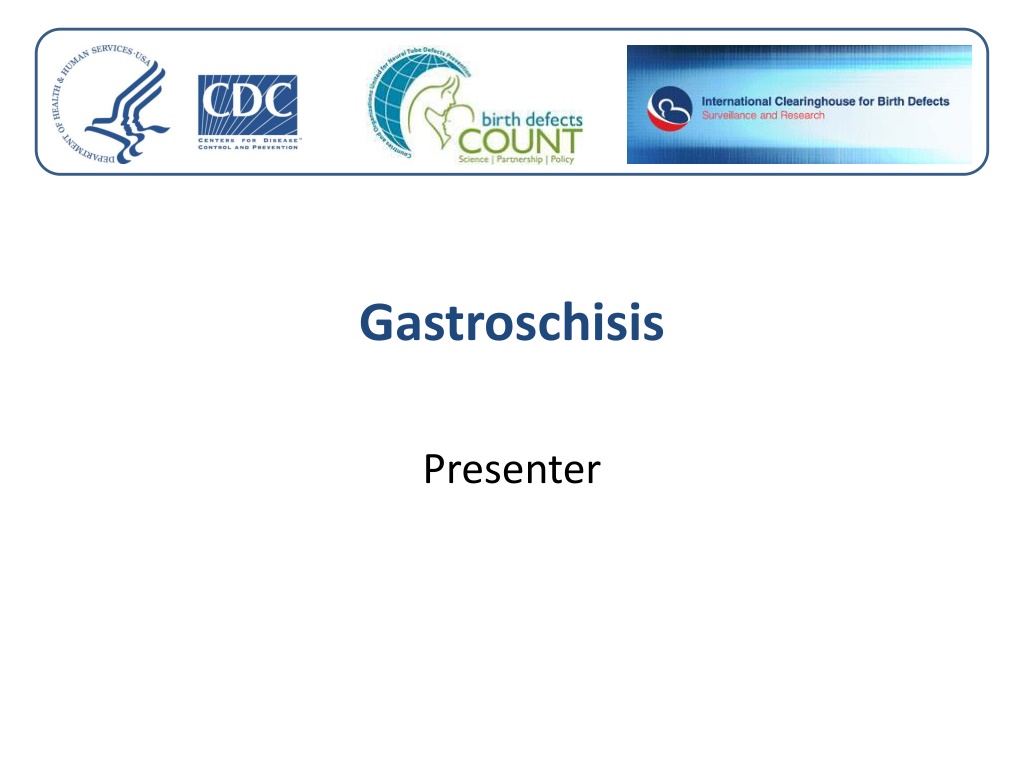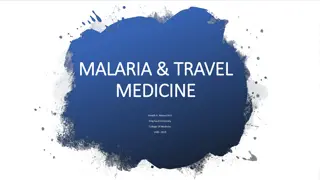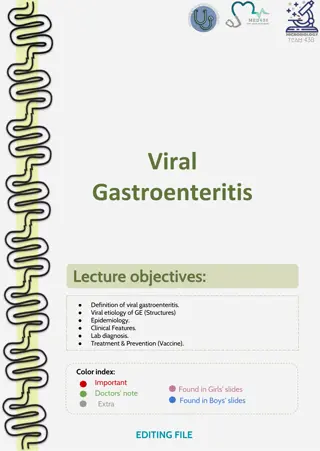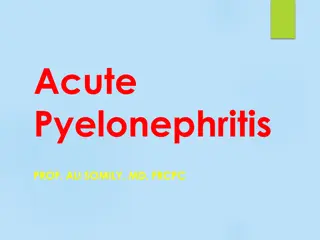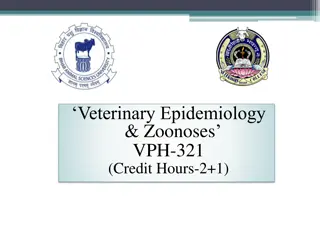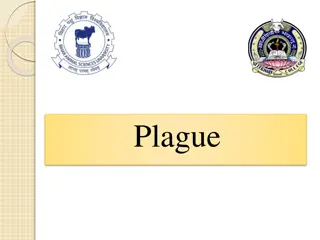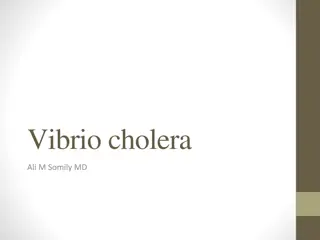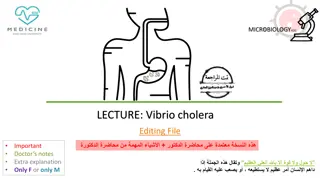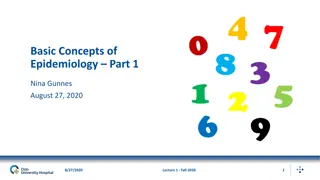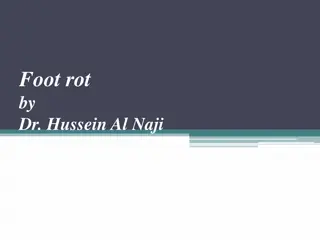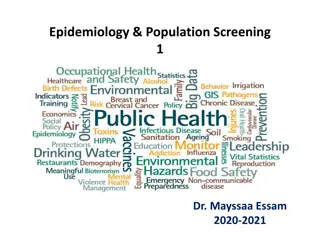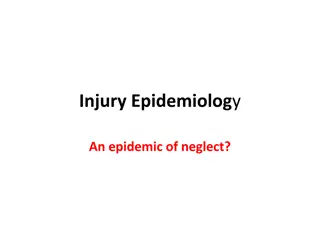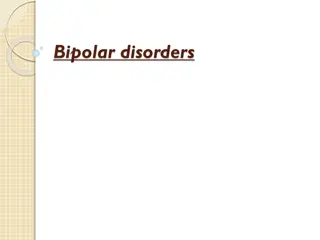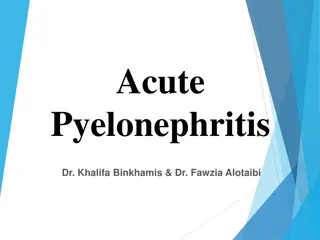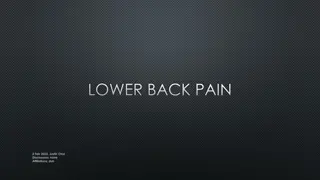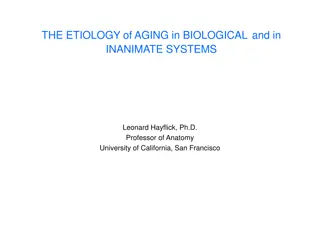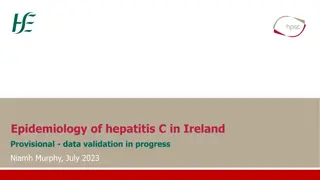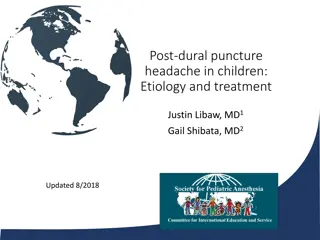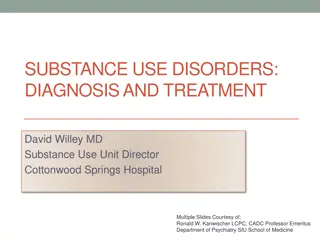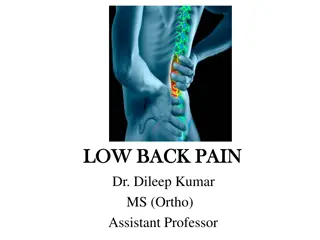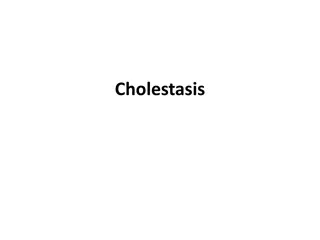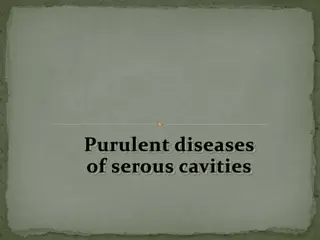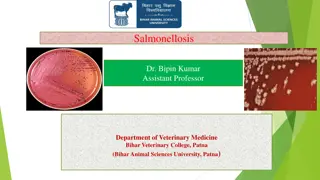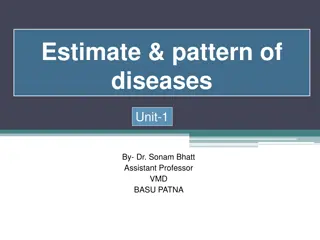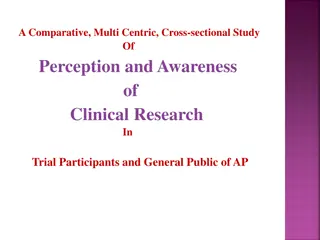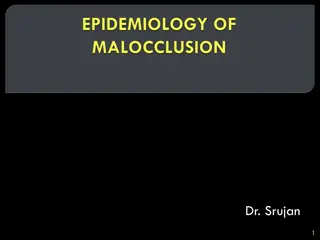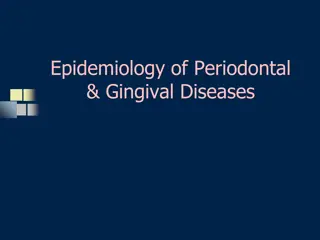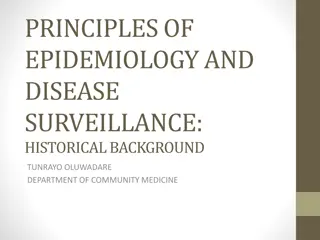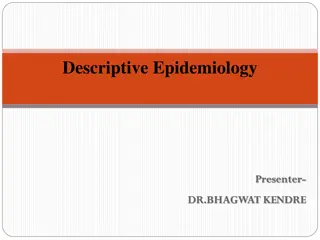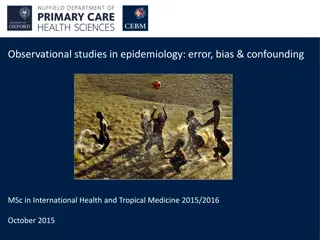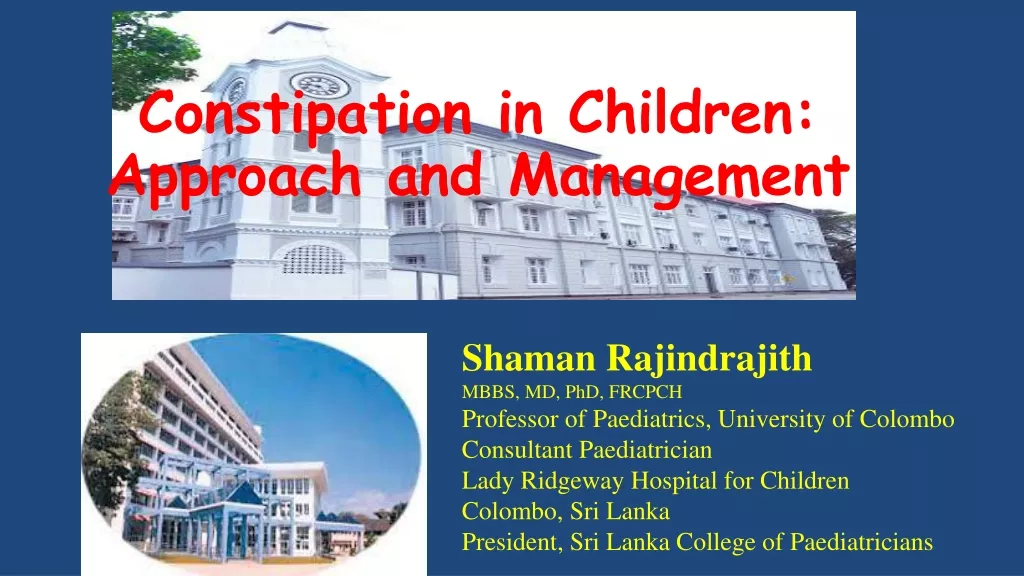Understanding Gastroschisis: Clinical Features, Epidemiology, and Etiology
Gastroschisis is a birth defect involving herniation of intestines outside the abdomen. This presentation covers clinical features, epidemiological aspects like prevalence rates and risk factors, along with insights into its etiology. Learn to differentiate gastroschisis from omphalocele, recognize associated malformations, and gain coding and reporting tips.
Download Presentation

Please find below an Image/Link to download the presentation.
The content on the website is provided AS IS for your information and personal use only. It may not be sold, licensed, or shared on other websites without obtaining consent from the author. Download presentation by click this link. If you encounter any issues during the download, it is possible that the publisher has removed the file from their server.
E N D
Presentation Transcript
Gastroschisis Presenter
Learning Objectives By the end of this presentation participants will be able to Describe clinical features of gastroschisis Understand main epidemiological features of gastroschisis Apply helpful tips for coding and reporting Recognize the differences between gastroschisis and omphalocele Gastroschisis | 2
Definition Defect (schisis) of the anterior abdominal wall, accompanied by herniation of the small and part of the large intestines, and occasionally other abdominal organs, into the amniotic cavity, and not in the umbilical cord. Umbilical cord Photo courtesy of: ECLAMC http://www.cdc.gov/ncbddd/birthdefects/Gastroschisis-graphic.html Gastroschisis | 3
Gastroschisis etiology: Disruption or Malformation? Disruption Vascular origin: abnormality of the omphalomesenteric artery, leading to infarction and necrosis of the base of umbilical cord with subsequent gut herniation* Malformation Primary abnormality of body wall closure: occurrence proposed during the 3rd to 5th weeks (21-35 days) post-conception** *Source: Hoyme et al. J Pediatr, 1981 ** Source: Feldkamp et al. AJMG, 2007 The difference is relevant when interpreting etiologic studies Gastroschisis | 4
Main Clinical Features Opening occurs lateral to the umbilical cord (generally to the right) The herniated organs lack a protective membrane The extruded abdominal contents can be matted and covered by a thick fibrous material Feature Typical Findings Associated malformations 16.6% (1.7% chromosomal)* Syndromes Extremely rare * Source: Stoll et al 2008. Am J of Med Gen Part A 146A:1280-1285 Gastroschisis | 5
Main Epidemiological Features Feature Typical Findings 4.4 per 10,000 (USA)* 2.98 per 10,000 (Europe)** Increasing in some countries*, **, and more common among young mothers** Prevalence Misclassification with omphalocele Differences in proportion of young mothers and/or in prevalence of risk factors Reasons for variability of prevalence *Source: Kirby RS, Marshall J, Tanner JP et al. Prevalence and Correlates of Gastroschisis in 15 States, 1995 to 2005. Obstet Gynecol. 2013 Aug;122(2, PART 1):275-281. **Source: Loane M, Dolk H, Morris JK; EUROCAT Working Group. Maternal age-specific risk of non- chromosomal anomalies. BJOG. 2009 Jul;116(8):1111-9. Gastroschisis | 6
Gastroschisis prevalence rates Early Studies More Recent Studies No of cases No of births Registry PRR (95% CI) Rate (95% CI) Year Rate (95% CI) Year Australia 593 4 140 849 0.88 (0.42 -1.62) 1981 2.65 (2.06 - 3.35) 1997 1.08 (1.06 to 1.10) Finland 97 0.92 (0.33 -2.00) 1984 1.92 (0.96 - 3.44) 1998 1.11 (1.05 to 1.16) 947 072 France (Central East) 180 1 932 649 0.15 (0.00 -0.82) 1978 1.46 (0.82 -2.42) 1998 1.04 (1.01 to 1.06) France (Paris) 92 0.00 (0.00 -1.04) 1981 2.69 (1.29 to 4.95) 1998 1.11 (1.07 to 1.16) 659 523 Ireland (Dublin) 30 0.00 (0.00 -1.47) 1980 1.56 (0.30 to 4.58) 1998 1.15 (1.07 to 1.23) 395 528 Japan 361 2 931 758 1.01 (0.43-2.00) 1974 2.28 (1.43 to 3.46) 1998 1.03 (1.02 to 1.05) Mexico 161 1.20 (0.38-2.81) 1980 4.93 (2.87 to 7.90) 1998 1.06 (1.03 to 1.10) 820 987 Norway 265 1 403 783 0.99 (0.36-2.17) 1974 3.07 (1.82 to 4.86) 1998 1.04 (1.02 to 1.06) South America 353 3 565 511 0.12 (0.00-0.67) 1974 2.88 (2.07 to 3.90) 1998 1.16 (1.13 to 1.18) Source: Gian Luca Di Tanna et al BMJ. 325(14); 2002. Gastroschisis | 7
Gastroschisis: increasing prevalence in many countries Source: Castilla, Mastroiacovo, Orioli: Am J Med Genet C 2008;148C(3):162-79 Gastroschisis | 8
Diagnosis Gastroschisis is usually easily recognized by the relation of the defect to the umbilical cord on physical examination after delivery Differential diagnosis must exclude: Omphalocele Limb body-wall complex Prenatal diagnoses should be confirmed postnatally Photo courtesy of: Birth defects atlas of selected congenital anomalies Photo courtesy of: ECLAMC Gastroschisis Limb body wall Gastroschisis | 9
Tips for reporting Describe the defect in relation to the umbilical cord, and specify which organs are outside the abdome Photographs are useful for review and should be taken with the umbilical cord clearly visible Describe any additional malformations, if present Indicate whether a clinical geneticist was consulted Gastroschisis | 10
ICD-10 RCPCH coding of gastroschisis Relevant ICD-10 codes and RCPCH uses Q79 Congenital malformations of the musculoskeletal system, not elsewhere classified (avoid using this general code if more specific information is available) Q79.3 Gastroschisis Q79.5 other congenital malformations of abdominal wall (use this code ONLY when the diagnosis of gastroschisis is not confirmed) Exclusions Q79.2 Exomphalos/omphalocele Q89.81 Limb body wall complex Pentalogy of Cantrell Cloacal exstrophy Gastroschisis | 11
Questions? If you have questions please send an email to centre@icbdsr.org or to birthdefectscount@cdc.gov Gastroschisis | 12
References Other useful references: 1. Hackshaw A, Rodeck C, Boniface S. Maternal smoking in pregnancy and birth defects: a systematic review based on 173 687 malformed cases and 11.7 million controls. Hum Reprod Update. 2011 Sep-Oct;17(5):589-604. 2. Werler MM, Mitchell AA, Moore CA, Honein MA. Is there epidemiologic evidence to support vascular disruption as a pathogenesis of gastroschisis? Am J Med Genet A. 2009 Jul;149A(7):1399-406. 3. Siega-Riz AM, Herring AH, Olshan AF, Smith J, Moore C; National Birth Defects Prevention Study. The joint effects of maternal prepregnancy body mass index and age on the risk of gastroschisis. Paediatr Perinat Epidemiol. 2009 Jan;23(1):51-7. 4. Stothard KJ, Tennant PW, Bell R, Rankin J. Maternal overweight and obesity and the risk of congenital anomalies: a systematic review and meta-analysis. JAMA. 2009 Feb 11;301(6):636-50. 5. Elliott L, Loomis D, Lottritz L, Slotnick RN, Oki E, Todd R. Case-control study of a gastroschisis cluster in Nevada. Arch Pediatr Adolesc Med. 2009 Nov;163(11):1000-6. 6. Draper ES, Rankin J, Tonks AM, Abrams KR, Field DJ, Clarke M, Kurinczuk JJ. Recreational drug use: a major risk factor for gastroschisis? Am J Epidemiol. 2008 Feb 15;167(4):485-91. 7. Richardson S, Browne ML, Rasmussen SA, et al. Associations between periconceptional alcohol consumption and craniosynostosis, omphalocele, and gastroschisis. Birth Defects Res A Clin Mol Teratol. 2011 Jul;91(7):623-30. Gastroschisis | 13
References 10. Feldkamp ML, Reefhuis J, Kucik J et al. Case-control study of self reported genitourinary infections and risk of gastroschisis: findings from the national birth defects prevention study, 1997-2003. BMJ. 2008 Jun 1;336(7658):1420-3. Mastroiacovo P. Risk factors for gastroschisis. BMJ. 2008 Jun 21;336(7658):1386-7. Feldkamp ML, Meyer RE, Krikov S, Botto LD. Acetaminophen use in pregnancy and risk of birth defects: findings from the National Birth Defects Prevention Study. Obstet Gynecol. 2010 Jan;115(1):109-15. Rittler M, Castilla EE, Chambers C, Lopez-Camelo JS. Risk for gastroschisis in primigravidity, length of sexual cohabitation, and change in paternity. Birth Defects Res A Clin Mol Teratol. 2007 Jun;79(6):483-7. Chambers CD, Chen BH, Kalla K, Jernigan L, Jones KL. Novel risk factor in gastroschisis: change of paternity. Am J Med Genet A. 2007 Apr 1;143(7):653-9. Tinker SC, Reefhuis J, Dellinger AM, Jamieson DJ. Maternal injuries during the periconceptional period and the risk of birth defects, National Birth Defects Prevention Study, 1997-2005. Paediatr Perinat Epidemiol. 2011 Sep;25(5):487-96. Lupo PJ, Langlois PH, Reefhuis et al. Maternal occupational exposure to polycyclic aromatic hydrocarbons: effects on gastroschisis among offspring in the National Birth Defects Prevention Study. Environ Health Perspect. 2012 Jun;120(6):910-5. Waller SA, Paul K, Peterson SE, Hitti JE. Agricultural-related chemical exposures, season of conception, and risk of gastroschisis in Washington State. Am J Obstet Gynecol. 2010 Mar;202(3):241.e1-6. Mattix KD, Winchester PD, Scherer LR. Incidence of abdominal wall defects is related to surface water atrazine and nitrate levels. J Pediatr Surg. 2007 Jun;42(6):947-9. Kielb C, Lin S, Herdt-Losavio M et al. Maternal periconceptional occupational exposure to pesticides and selected musculoskeletal birth defects. Int J Hyg Environ Health. 2013 Jun 20. 11. 12. 13. 14. 15. 16. 17. 18. 19. Gastroschisis | 14
